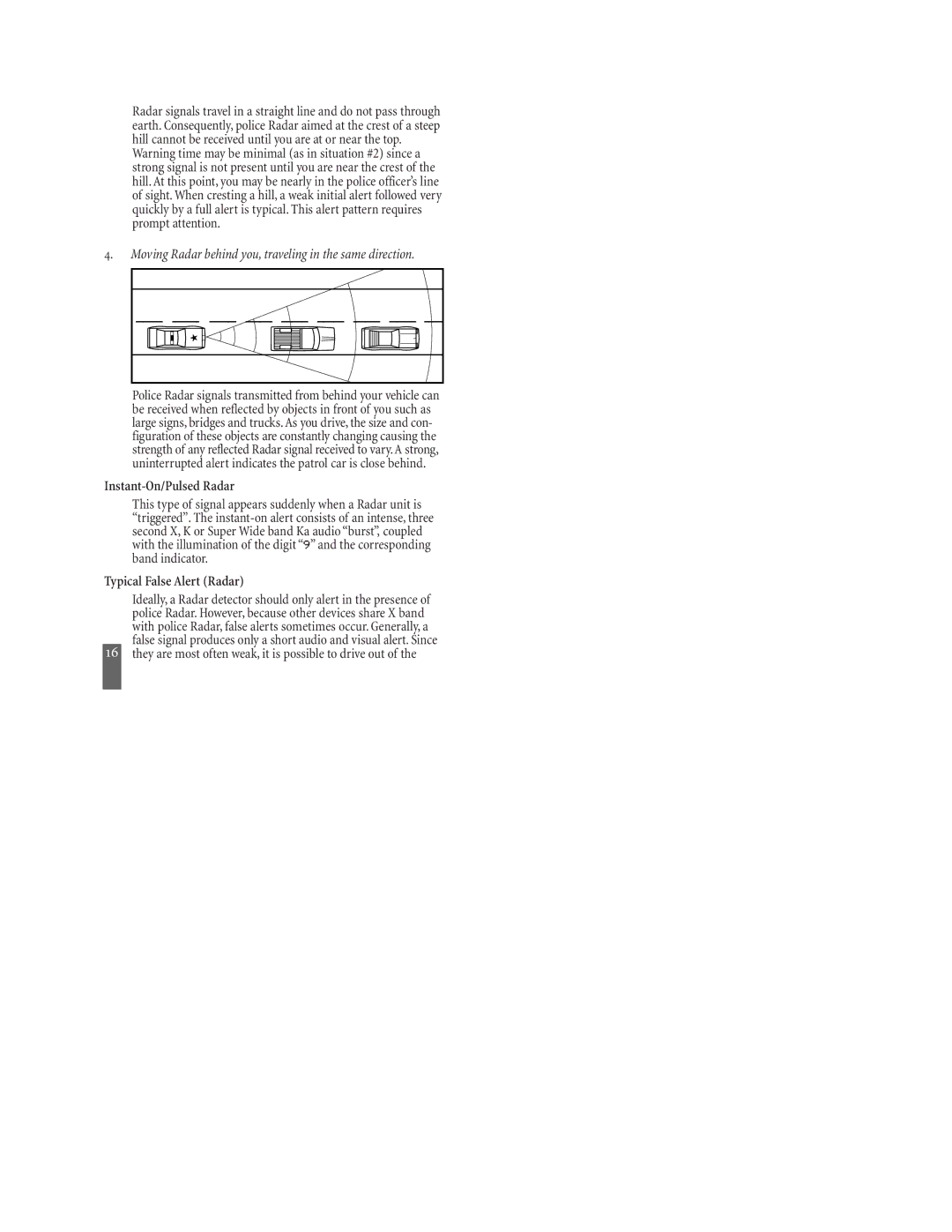
Radar signals travel in a straight line and do not pass through earth. Consequently, police Radar aimed at the crest of a steep hill cannot be received until you are at or near the top.
Warning time may be minimal (as in situation #2) since a strong signal is not present until you are near the crest of the hill. At this point, you may be nearly in the police officer’s line of sight. When cresting a hill, a weak initial alert followed very quickly by a full alert is typical. This alert pattern requires prompt attention.
. Moving Radar behind you, traveling in the same direction.
Police Radar signals transmitted from behind your vehicle can be received when reflected by objects in front of you such as large signs, bridges and trucks. As you drive, the size and con- figuration of these objects are constantly changing causing the strength of any reflected Radar signal received to vary. A strong, uninterrupted alert indicates the patrol car is close behind.
This type of signal appears suddenly when a Radar unit is “triggered”. The
Typical False Alert (Radar)
Ideally, a Radar detector should only alert in the presence of police Radar. However, because other devices share X band with police Radar, false alerts sometimes occur. Generally, a false signal produces only a short audio and visual alert. Since
